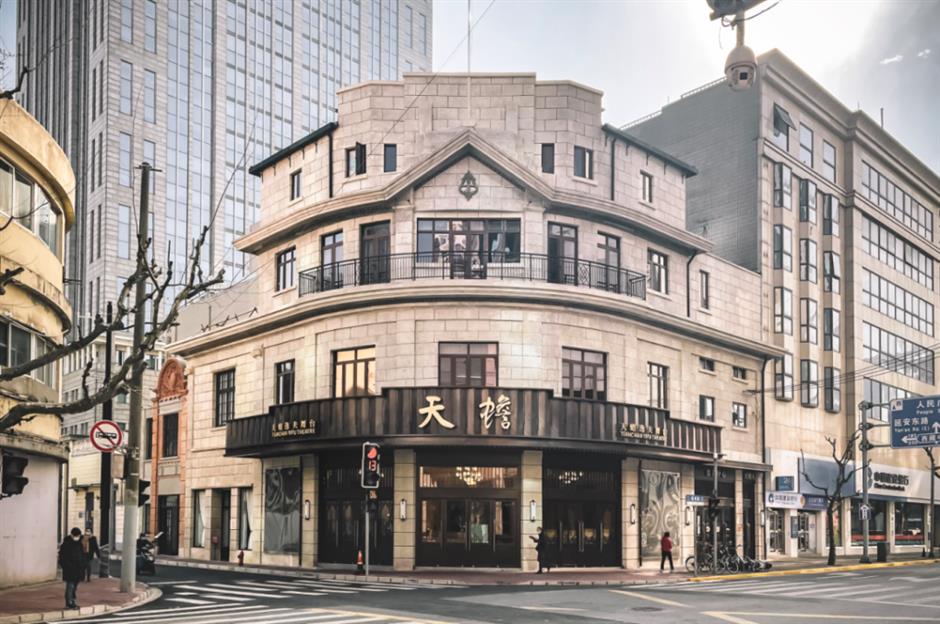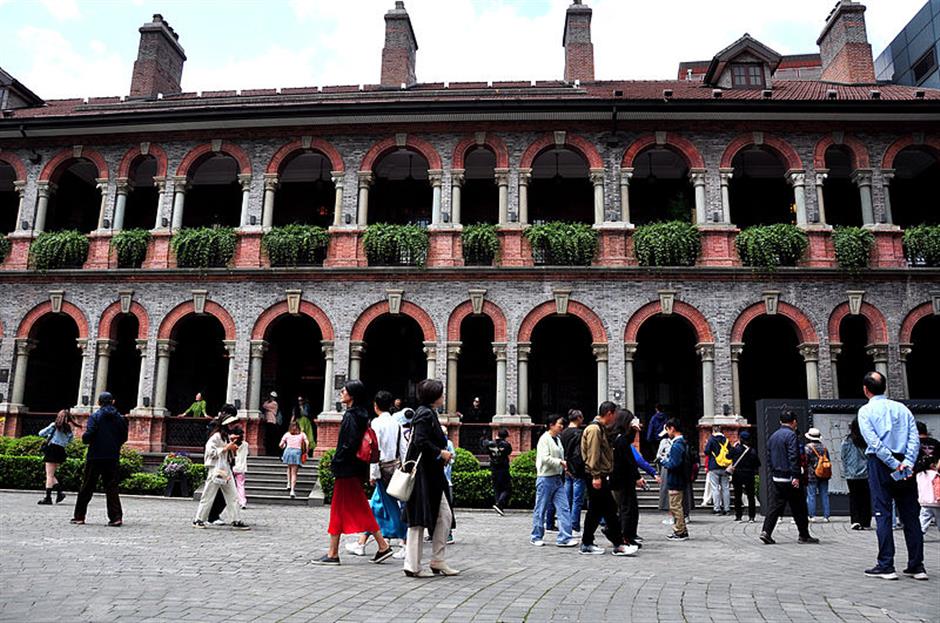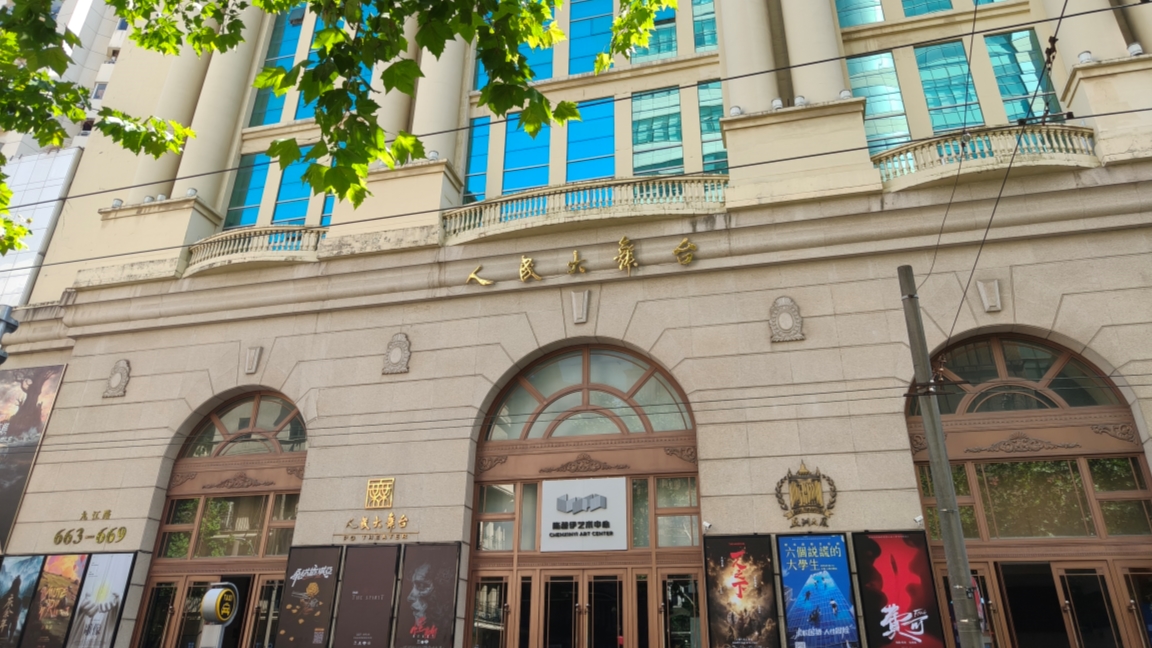
Mei Lanfang, the world-renowned master of performing arts, found in Shanghai both a springboard for fame and a window to broaden his artistic vision. He lived in the city for decades, leaving traces of his life and career across its streets.
Shanghai's vibrant culture and cosmopolitan influences had a direct and lasting impact on Mei's innovations in Peking Opera. In 1913, Mei first arrived in the city at the age of 19. His debut performance in Shanghai instantly made him a sensation.
Drawing on diverse artistic influences, he quickly gained nationwide fame and was celebrated by the public as the "King of the Stage." In 1932, Mei moved to Shanghai with his family, remaining here until 1951 when he went to Beijing.
From the theaters where he once performed to his former residence in Shanghai, we trace the footsteps of this celebrated artist to uncover the city's enduring charm.
Provided by Yang Yiting. Directed by Yang Yiting, Xu Wei. Shot by Yang Yiting. Edited by Yang Yiting. Reported by Yang Yiting. Subtitles by Yang Yiting.
In the video, we follow Mei Lanfang's footsteps, exploring the historic theaters in Huangpu District where he once performed.
Tianchan Yifu Theater
It is the former site of Tianchan Theater, where Mei was a frequent performer. Many of his classic stage movements were shaped and perfected on this stage.
His first performance there, in 1916 at the invitation of investor Xu Shaoqing, featured numerous newly staged pieces, ranging from the traditional costume drama "Chang'e Flying to the Moon" to modern plays like "Deng Xiagu" and "A Strand of Hemp."
Mei returned to the theater for performances in 1920, 1922, and 1932. In 1933, the premiere of "Resisting the Jin Army" was also held at the theater, stirring patriotic fervor among audiences. In 1938, he staged a series of performances here before moving to Hong Kong, returning to Shanghai only in 1942.
How to get there:
The theater is located at 701 Fuzhou Road, near Yunnan Road M. You can take Metro Line 1, 2, 8 to People's Square Station, take Exit 15, and walk to the theater.

Tianchan Yifu Theater on Fuzhou Road.
PG Theater
Located in the heart of Huangpu District, PG Theater is the oldest venue for Peking Opera performances in Shanghai. With a history of over a century, the European Baroque-style building also witnessed Mei's performances for several decades.
In 1930, before his tour of the United States, Mei briefly collaborated with another Peking Opera master Ma Lianliang at this theater. In 1934, following the theater's renovation and reopening, Mei and Ma performed together in around 40 shows.
After the founding of the People's Republic of China, the theater became the venue where Mei performed most frequently. In the 1950s, he led the troupe in major productions here, including "Luoshen," and "The Drunken Concubine." In October 1956, at the age of 62, Mei gave his final performance "The Phoenix Returns to Its Nest" in Shanghai at the theater, concluding over 40 years of stage career in the city.
How to get there:
The theater is located at 663 Jiujiang Road. You can take Metro Line 1, 2, 8 to People's Square Station, take Exit 14, and walk to the theater.

PG Theater on Jiujiang Road.
Great Theater of China
Great Theater of China was once one of the major venues for Peking Opera performances in the city. For a period of time, it served as an important stage for Mei, leaving behind memorable moments in the history of Chinese opera. As such, it has also become a valuable cultural and historical heritage site in the city.
In February 1935, Mei participated in a series of charity performances to raise funds for the drought in Zhejiang, performing alongside many prominent social figures of the time.
From November 2, 1946, to January 6, 1947, Mei collaborated with Yang Baosen in continuous performances at the theater, performing almost daily for over two months. The repertoire included "Su San Under Police Escort," "Famen Temple," and "Farewell My Concubine." It is said that the theater's iron gates were once damaged due to the enthusiastic crowds.
From December 6, 1949, to January 30, 1950, Mei led the troupe in another series of performances here. On this occasion, he brought along his 16-year-old son, Mei Baojiu. Father and son performed together on stage for the first time, presenting "Romantic Dream in Garden" at the theater.
How to get there:
The theater is located at 704 Niuzhuang Road, near Guangxi Road N. You can take Metro Line 1, 2, 8 to People's Square Station, take Exit 7, and walk to the theater.

Great Theater of China on Niuzhuang Road.
Sinan Mansions
Sinan Mansions is the only fully preserved garden-style historical villa complex in downtown Shanghai, featuring over 50 European-style houses from the early 20th century. Once home to Mei and famous figures like Zhou Enlai, Sun Yat-sen, Soong Ching Ling and Liu Yazi, many villas are now boutique hotels, cafes, restaurants, and shops.
Shady lanes lined with plane trees make it a perfect spot for an autumn stroll, while QR codes on the building facades offer free access to stories of the past as part of the "Sinan Open-Air Museum." Today, Sinan Mansions is a vibrant destination for culture, dining, and photography, blending Shanghai's history with its modern lifestyle.
How to get there:
Sinan Mansions is located at 51-61 Sinan Road in Huangpu District, near Fuxing Road M. You can take Metro Line 13 to Huaihai Middle Road Station, take Exit 1, and walk to the entrance. The entire complex spans approximately 50,000 square meters, offering plenty to explore.

The historic buildings in the East garden of Sinan Mansions.
Yipin Cun – heritage architecture of Sinan Mansions
Yipin Cun, part of the Sinan Mansions complex, was built between 1912 and 1936. It features masonry-structured, European-style terrace houses, a classic example of Shanghai's early 20th-century residential architecture and the city's East-meets-West charm.
Mei's former residence (87 Sinan Road) at Yipin Cun is a brick-and-wood house with cement-and-pebble walls, a red-tiled gabled roof, and a Western-style arched entrance leading to a garden lawn. During his time here, Mei rehearsed such works as "Resisting the Jin Army" and "Regrets of Life and Death," and welcomed international cultural figures, including British actor and filmmaker Charlie Chaplin.
Also at the house, Mei grew a beard to show his defiance and refused to perform for the Japanese puppet regime, becoming a symbol of artistic integrity and patriotism in the period of the War of the Chinese People's Resistance Against Japanese Aggression (1931-1945).
Former Chinese premier Zhou Enlai also once lived in Yipin Cun at a Spanish-style garden house (73 Sinan Road). It is now the Memorial House of the Shanghai Office of the Delegation of Communist Party of China.
During the 1946–1947 negotiations between the Kuomintang government and the Communist Party of China, Zhou lived and worked here, and the residence also hosted United States presidential envoy George Marshall.

Yipin Cun, part of the Sinan Mansions complex.

